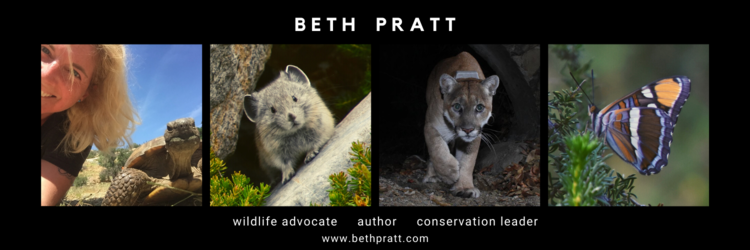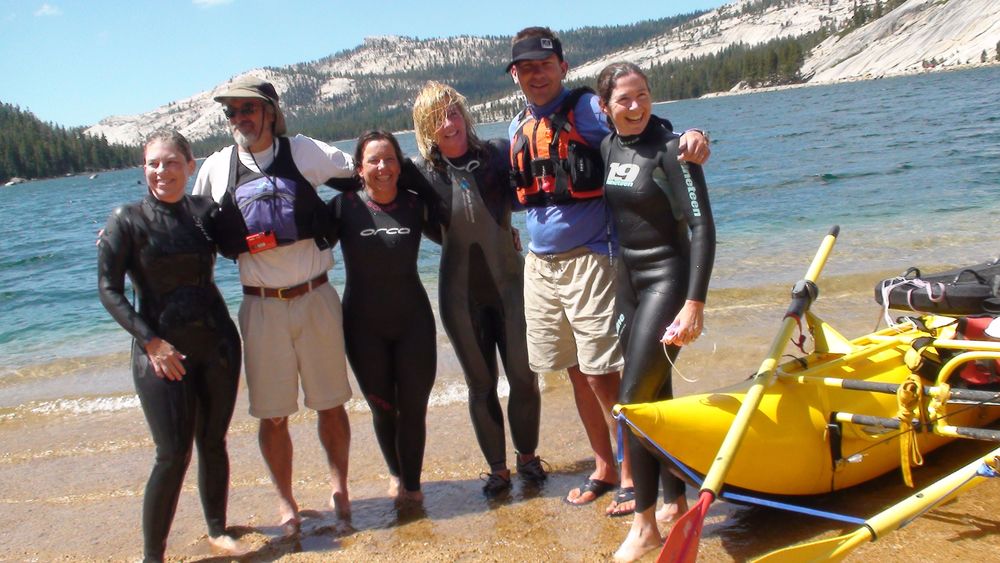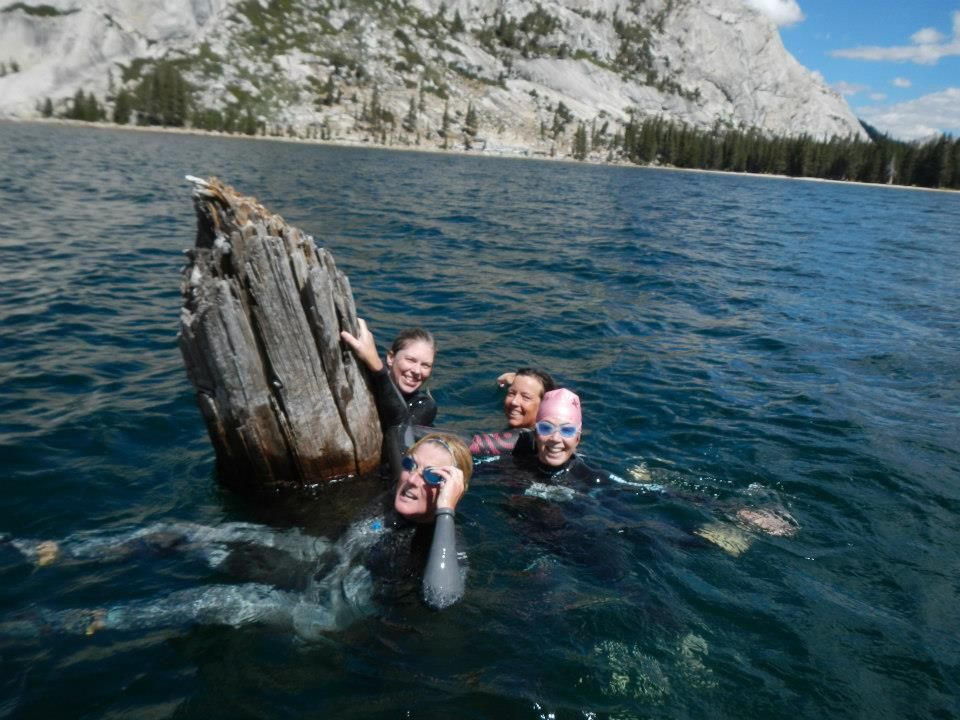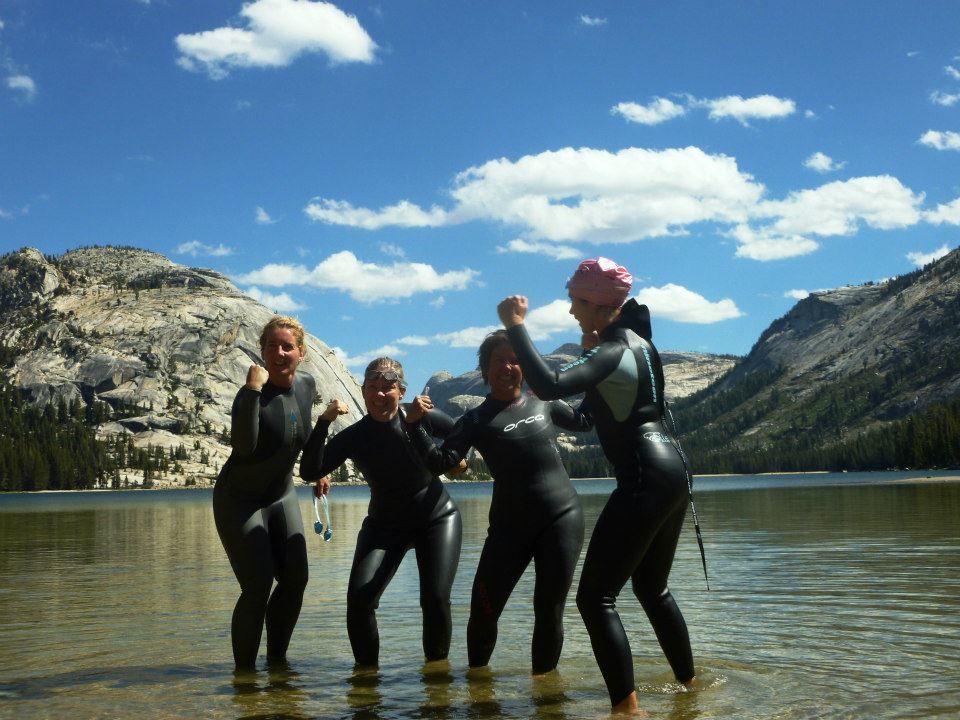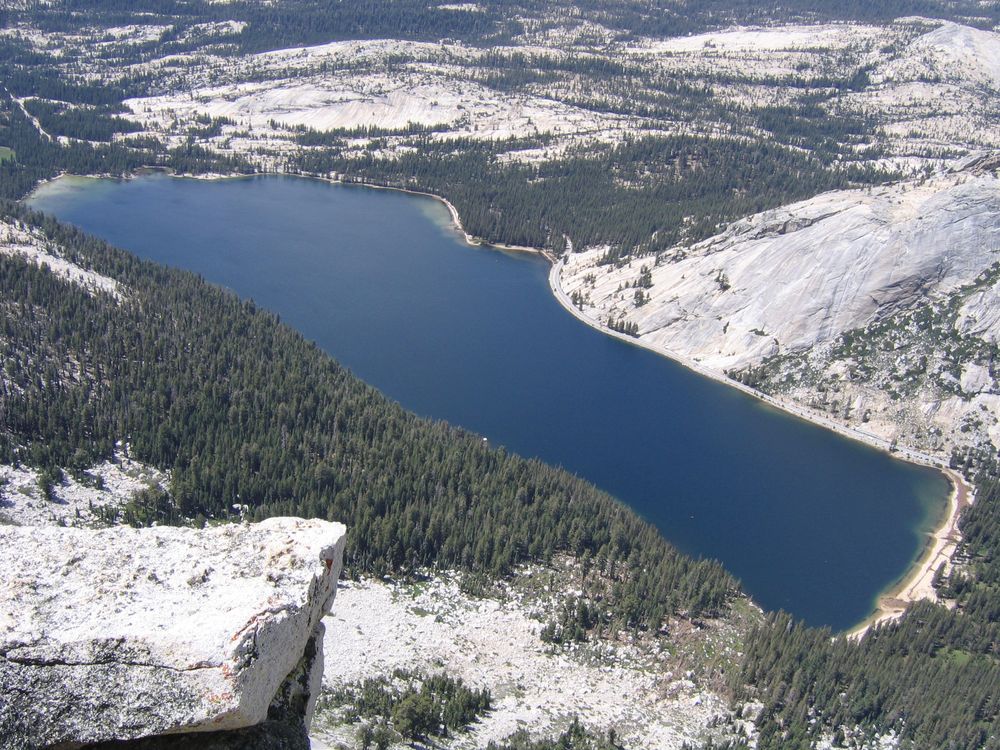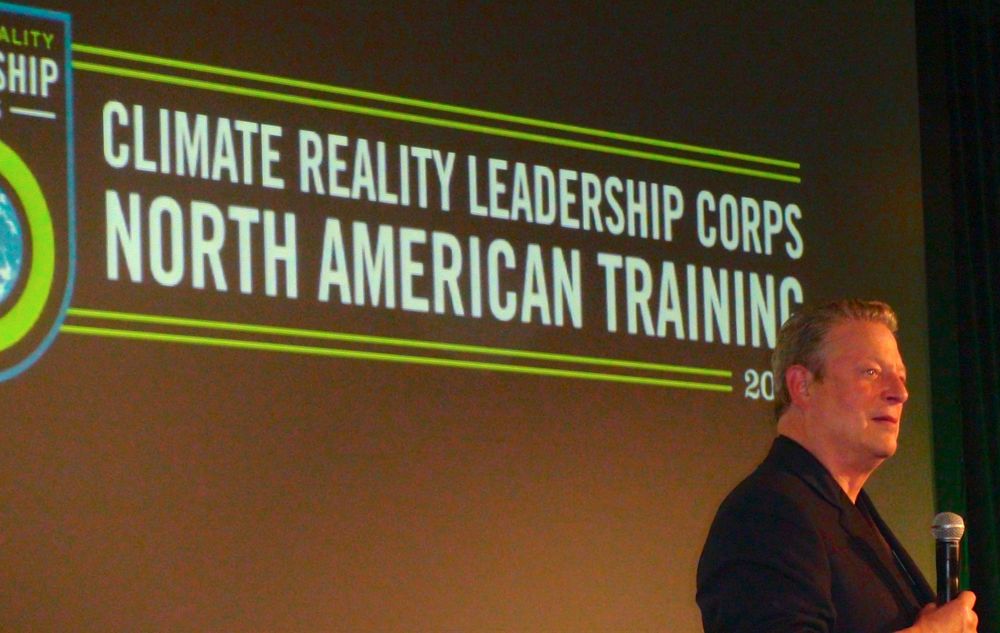 Al Gore at the Climate Reality Leadership Training In San Francisco (photo by Beth Pratt)Nature doesn’t do bailouts.”
Al Gore at the Climate Reality Leadership Training In San Francisco (photo by Beth Pratt)Nature doesn’t do bailouts.”
The former Vice President and Nobel Laureate Al Gore made this simple yet powerful statement to our group after showing us startling images of the devastating drought impacting almost a quarter of the United States, the chaotic flooding in the Philippines, and the horrific wildfires in Australia. Need evidence of extreme weather and the possible link with climate change? “Just watch the evening news,” Gore offered, “it’s like taking a nature walk through Revelations each night.”
And the truth of his statement forcibly resonated with the over a thousand individuals listening to him speak last week, people from 58 countries across the globe concerned enough about climate change to spend three days of their time training with Gore and other experts in the field (and caring enough to stay inside during sunny, fogless weather in San Francisco, which as Californians know is a temptation very difficult to resist). As part of Gore’s non-profit, The Climate Reality Project, he personally trains a diverse leadership corps from a variety of backgrounds to work toward solving the climate crisis and we were the lucky class of 2012. Much to our delight, fellow classmates included the Divine Miss M—Bette Midler—and returning alumnus, country music star Kathy Mattea.
 Country singer Kathy Mattea shared her story “My Coal Journey” and treated attendees to some of her music (photo by Beth Pratt)Gore related story after compelling story of people’s experiences with the new normal of ‘weather gone wild.’ In one video of the mudslides in Brazil, a frightened woman stood on a crumbling foundation grasping her little dog as a violent rush of mud and water sped by her. A neighbor on a nearby stable structure cast her a rope and somehow managed to pull the woman to safety through the torrid rapids. Those of us in the audience gasped and shuddered at her plight.
Country singer Kathy Mattea shared her story “My Coal Journey” and treated attendees to some of her music (photo by Beth Pratt)Gore related story after compelling story of people’s experiences with the new normal of ‘weather gone wild.’ In one video of the mudslides in Brazil, a frightened woman stood on a crumbling foundation grasping her little dog as a violent rush of mud and water sped by her. A neighbor on a nearby stable structure cast her a rope and somehow managed to pull the woman to safety through the torrid rapids. Those of us in the audience gasped and shuddered at her plight.
Climate change has become a reality in people’s lives worldwide. Yet even when faced with the knowledge of these tragic stories or the overwhelming scientific evidence, our leaders still fail to act.
To Gore’s point, what magical bailouts are we waiting for? America has a long-standing tradition of being ignorantly optimistic about happy endings, as evidenced by the popularity of any Bruce Willis or superhero movie today. But our government can’t pass a bailout package when the concentration of carbon dioxide in the atmosphere reaches 400 ppm to save us from the consequences. Bruce Willis isn’t going to miraculously blow up the atmospheric asteroid at the last minute to save us from rising temperatures. Even the Avengers can’t help us—the Hulk (the real life environmental crusader Mark Ruffalo)—can’t even save New York from fracking despite his valiant efforts.
We don’t get to suddenly holler “all-y all-y in come free” and receive a bailout check and a do over, even though nature certainly ranks higher than the banks in the “too big to fail category.”
 Meeting Al Gore-and spending a day learning from him-was an honor.As an environmental leader climate change had always been on my radar, but two catalysts in 2006 jolted me out of my “it’s happening a long time from now and in a place far, far away” complacency. The first involved receiving a copy of the NRDC’s Losing Ground: Western Parks Endangered by Climate Disruption. National parks are my north star, both personally and professionally, and I have been fortunate enough to work in both Yellowstone and Yosemite. I read this startling report cover to cover and finished in shock. Climate change was not only a future threat to our beloved parks, but also already had displayed significant impacts. Why was no one talking about this? National Parks are as American as apple pie and baseball! Yet the issue received scant attention.
Meeting Al Gore-and spending a day learning from him-was an honor.As an environmental leader climate change had always been on my radar, but two catalysts in 2006 jolted me out of my “it’s happening a long time from now and in a place far, far away” complacency. The first involved receiving a copy of the NRDC’s Losing Ground: Western Parks Endangered by Climate Disruption. National parks are my north star, both personally and professionally, and I have been fortunate enough to work in both Yellowstone and Yosemite. I read this startling report cover to cover and finished in shock. Climate change was not only a future threat to our beloved parks, but also already had displayed significant impacts. Why was no one talking about this? National Parks are as American as apple pie and baseball! Yet the issue received scant attention.
The second catalyst that jolted me out of complacency? Watching An Inconvenient Truth. Al Gore’s courage and vigilance in bringing attention to climate change both inspired and transformed me. A year after viewing his film, I took a job in Yellowstone National Park working on sustainability and climate change programs. His message compelled me to act and dedicate my work solely to this cause.
His message is still a sobering reality check. As the great science fiction writer Philip K. Dick said, “Reality is that which when you stop believing in it, it doesn’t go away.” Despite the attempts of the fossil fuel industry to discredit the science, and of our political leaders to at best ignore the issue and at worst obfuscate it for personal gain, climate reality happens and all the magical thinking in the world won’t stop it. This is a reality we must all face
 We must face the reality of photos of starving horses set loose to fend for themselves, a now common occurrence across the Midwest since people can’t afford the high cost of feed with the drought. A reality where we just experienced the hottest month ever recorded this July, so far from our normal parameters that planes at Reagan National Airport had to be grounded because the runaways were melting. Or a reality of the catastrophic wildfires, fueled by the drier weather, that raced across Colorado and destroyed hundreds of homes and caused thousands to evacuate. Or of the destructive flooding in Vermont that prompted its Governor, Peter Shumlin, to observe, “We didn’t used to get weather patterns like this in Vermont. We didn’t get tropical storms. Our storm patterns weren’t like Costa Rica; they were like Vermont.”
We must face the reality of photos of starving horses set loose to fend for themselves, a now common occurrence across the Midwest since people can’t afford the high cost of feed with the drought. A reality where we just experienced the hottest month ever recorded this July, so far from our normal parameters that planes at Reagan National Airport had to be grounded because the runaways were melting. Or a reality of the catastrophic wildfires, fueled by the drier weather, that raced across Colorado and destroyed hundreds of homes and caused thousands to evacuate. Or of the destructive flooding in Vermont that prompted its Governor, Peter Shumlin, to observe, “We didn’t used to get weather patterns like this in Vermont. We didn’t get tropical storms. Our storm patterns weren’t like Costa Rica; they were like Vermont.”
Let’s be clear: climate change isn’t going to end the world. But it might make a tropical Vermont and cause a new dust bowl in the Midwest. And changes like these transform each of our lives with the far-reaching impacts.Acknowledging the reality of climate change doesn’t need to cause us to despair. Instead it should ignite in all of us the moral courage to act. Because we can solve it. In his book Our Choice: How We Can Solve the Climate Crisis, Gore demonstrates that we already possess the solutions, we just need the collective will necessary to change.
 NWF President and CEO presenting at the Climate Reality Project training (photo by Beth Pratt)As someone who is passionate about solving the climate crisis, as someone who Al Gore inspired and motivated with his tireless campaigning, as someone who cherishes all life on earth and works to preserve our legacy of wilderness and wildlife for future generations, I am honored to be a part of this remarkable group of people. I applaud my classmates from around the world for their commitment. I am proud of my organization, National Wildlife Federation, and our leader, Larry Schweiger, as NWF works diligently on the climate change issue. Larry also presented during the sessions and as he showed photos of his grandchildren, his voice hitched with emotion, “I don’t know a single parent who wouldn’t do anything to keep their child safe. We should all be engaged for the sake of our children.”
NWF President and CEO presenting at the Climate Reality Project training (photo by Beth Pratt)As someone who is passionate about solving the climate crisis, as someone who Al Gore inspired and motivated with his tireless campaigning, as someone who cherishes all life on earth and works to preserve our legacy of wilderness and wildlife for future generations, I am honored to be a part of this remarkable group of people. I applaud my classmates from around the world for their commitment. I am proud of my organization, National Wildlife Federation, and our leader, Larry Schweiger, as NWF works diligently on the climate change issue. Larry also presented during the sessions and as he showed photos of his grandchildren, his voice hitched with emotion, “I don’t know a single parent who wouldn’t do anything to keep their child safe. We should all be engaged for the sake of our children.”
There is a moral dimension to the climate crisis that must compel us to act immediately. At the end of the training, Mr. Gore encouraged our new class of climate leaders, “The next generation has hope in their hearts and they are not going to surrender. And they have every right to expect that those of us who are older will fight for them.” I hope you will join us in facing the reality of climate change, armed with the reality of facts and truth, not despair, and make the choice to act for the future of the people of this planet.
 The lion king of Griffith Park: P-22 (Photo National Park Service)One of the most remarkable wildlife stories I’ve been following recently involves a mountain lion taking up residence in Griffith Park, a 4,200 acre city park located in the middle of Los Angeles. Why is this noteworthy? This intrepid cat had to cross not only developed areas in a major urban region, but he also made it safely across the worst highway in the country—the 405. I drive on the 405 frequently and barely make it out alive in a car.
The lion king of Griffith Park: P-22 (Photo National Park Service)One of the most remarkable wildlife stories I’ve been following recently involves a mountain lion taking up residence in Griffith Park, a 4,200 acre city park located in the middle of Los Angeles. Why is this noteworthy? This intrepid cat had to cross not only developed areas in a major urban region, but he also made it safely across the worst highway in the country—the 405. I drive on the 405 frequently and barely make it out alive in a car.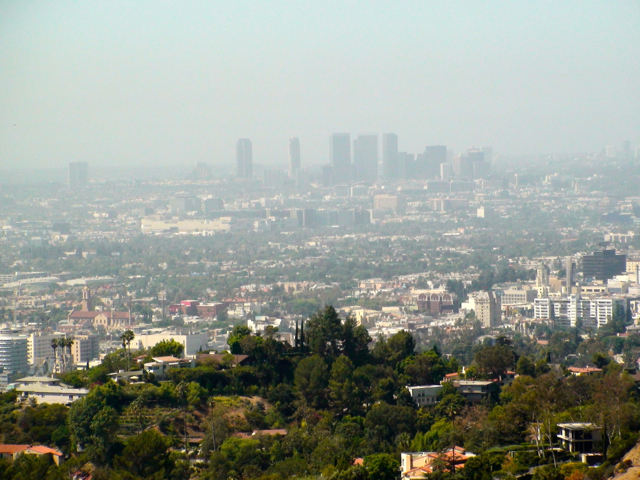 View of Los Angeles from Griffith Park (photo by Beth Pratt)The park is surrounded by one of the most populous metropolitan areas in the world and adjacent to many populated areas—the mountain lion, known as P-22, would only have to travel another six miles to stroll down Hollywood Boulevard. Griffith Park itself receives 10 million visitors a year who play golf, attend concerts at the Greek Theater (upcoming acts are Goyte and Crosby, Stills, and Nash), hike or camp, or play a round of golf or tennis.
View of Los Angeles from Griffith Park (photo by Beth Pratt)The park is surrounded by one of the most populous metropolitan areas in the world and adjacent to many populated areas—the mountain lion, known as P-22, would only have to travel another six miles to stroll down Hollywood Boulevard. Griffith Park itself receives 10 million visitors a year who play golf, attend concerts at the Greek Theater (upcoming acts are Goyte and Crosby, Stills, and Nash), hike or camp, or play a round of golf or tennis. P-22's new digs in LA, Griffith Park, gets 10 million visitors a year. (photo by Beth Pratt)Indeed, the threat of being attacked by a mountain lion is remote even with P-22 in close proximity to an urban environment. Mountain lions are solitary creatures and avoid people as a rule. As Jeff Sikich, the National Park Service biologist researching P-22 recently commented in an article in the Los Angeles Times: “I think there's a greater risk from hopping in your car and driving on the 101 … than getting attacked by a lion," Sikich said.
P-22's new digs in LA, Griffith Park, gets 10 million visitors a year. (photo by Beth Pratt)Indeed, the threat of being attacked by a mountain lion is remote even with P-22 in close proximity to an urban environment. Mountain lions are solitary creatures and avoid people as a rule. As Jeff Sikich, the National Park Service biologist researching P-22 recently commented in an article in the Los Angeles Times: “I think there's a greater risk from hopping in your car and driving on the 101 … than getting attacked by a lion," Sikich said.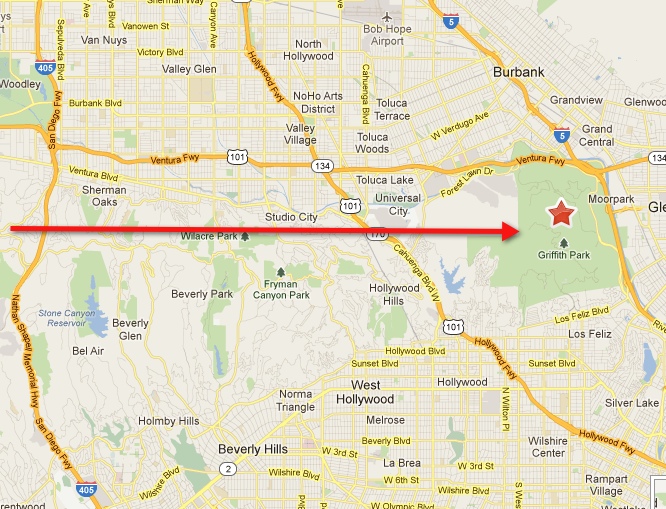 How did he survive the 405? Image using Google Maps
How did he survive the 405? Image using Google Maps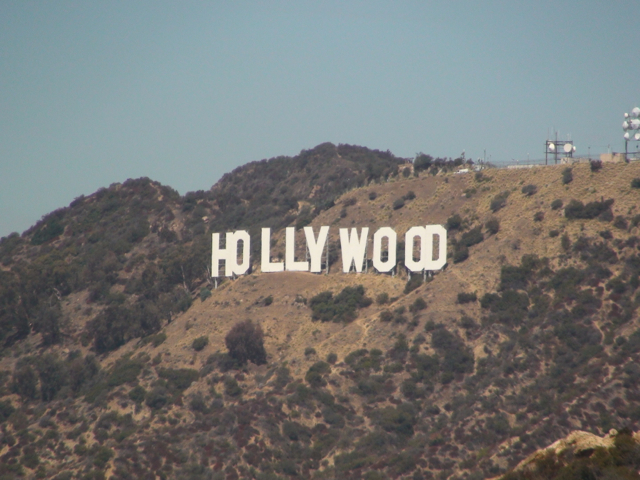 The Hollywood sign from Griffith Park-maybe P22 came seeking fame? (photo by Beth Pratt)
The Hollywood sign from Griffith Park-maybe P22 came seeking fame? (photo by Beth Pratt)